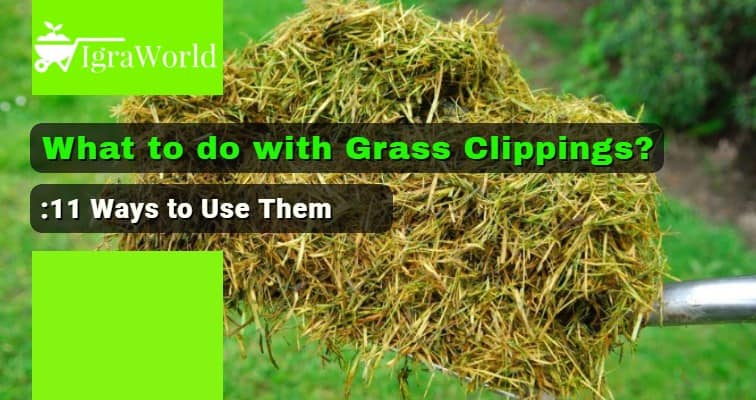
Nothing is wasted – your compost mix will be enriched by adding grass clippings. A good compost heap needs a mix of both green and brown material to create effective compost. And they break down quickly and release all that goodness to create effective compost material that you can use on your garden. Grass clippings are high in nutrients like nitrogen, phosphorus and potassium, which is very beneficial for your compost heap. Rather than just tossing them in the recycling bin, there’s many more useful things you can use your grass clippings for. However, if you really can’t stand the thought of not having a tidy and neat looking lawn, leaving your grass clippings to decompose on the grass might be a challenge for you. Leaving overly long clippings on the grass can also end up stifling the growth of your lawn, so make sure you are mowing regularly and only removing a third of the grass blade. Leaving too many grass clippings on the lawn can cause your grass to lose colour or burn.

It’s a good idea to use your grass clippings on the lawn every so often – but not all the time, especially as we approach winter. Your soil will also feel the benefits, as the clippings encourage earthworms and other beneficial micro-organisms that will improve soil health. Your grass will look greener, and grow stronger and healthier when you re-use your grass clippings to promote growth. And they won’t increase your levels of thatch either. Why buy extra fertiliser for your lawn when you can use what it produces naturally? Short clippings will break down fairly quickly and deposit all those important nutrients back into the soil. Recycling grass clippings can provide a nitrogen boost for your lawn and act as a natural fertiliser. But you’re missing out on the opportunity to add some quality nutrients to your lawn – for free. If you’re a fan of the smooth, perfectly manicured look, you probably shudder at the thought of leaving your grass clippings on the lawn. Should you leave your grass clippings on the lawn? Grass clippings are an organic medium that can be put to good use in a number of ways that you might not have thought of. But each time we dump our grass clippings we’re missing a golden opportunity to use this natural resource for something that’s both environmentally friendly and practical. As the sponge fills up with and holds onto the water for long periods of time, this also creates the perfect breeding grounds for a massive outbreak of lawn diseases.Īnd finally, a thatch layer filled with long grass clippings will require far more frequent lawn de-thatching, which can be expensive, is not environmentally friendly if avoidable, and is often avoidable by good lawn care practices.Many people consider mowing the grass to be a bit of a chore – and disposing of the grass clippings afterwards can be another one. A thatch layer that is filled with clippings from long grass will stop water from freely flowing into the lawn soil, thus depriving the lawn roots of water, so more water may need to be applied to the lawn, which is very wasteful.Ī lawn thatch layer which is full of old grass clippings is just like a sponge sitting inside a lawn. This creates more sponginess in the lawn but can also create several new problems.

Many of these longer grass clippings will also sink into the thatch layer of the lawn. They will only ever break down very slowly, and will often just sit on the lawn for a very long time without barely breaking down at all. Longer grass clippings should never be left on the lawn.


 0 kommentar(er)
0 kommentar(er)
